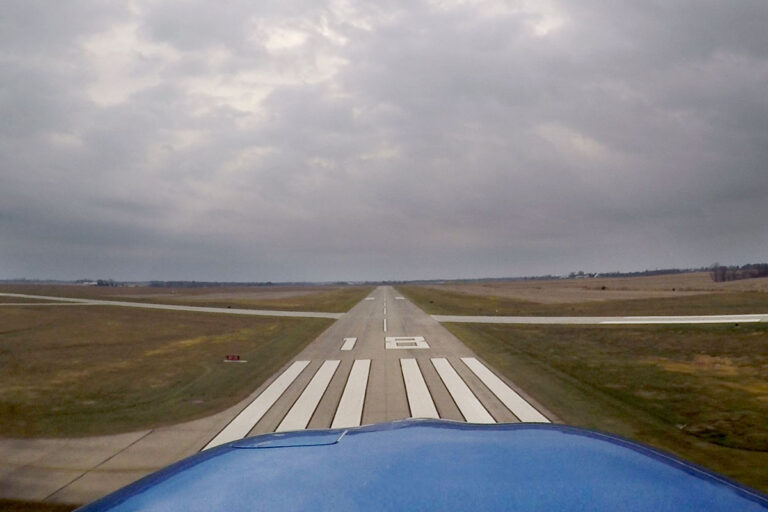After flying an instrument approach, a pilot performed a visual go-around after floating down the runway and re-entered the traffic pattern in visual conditions. Did they make the right choice? Would you have done anything differently?
Read through the report below, and tell us what you think.
Report: Multiple Go-Arounds Following An Instrument Approach Clearance
We found the following NASA ASRS report published by a pilot flying Part 91 in a single-engine light aircraft. This report brought up a few good questions that we should all think about before executing an instrument approach into a non-towered airport.
I was flying the RNAV (GPS) 34 straight in approach into KFHR. The airport was veiled in smoke/haze. The approach went well and I had visual contact with the airport 2 miles out. As I approached the runway, I was a little high and floated, so I decided to go-around. It was a mental slip.
As I was flying downwind, I realized that I messed up, but I had visual contact with the airport and at that point thought it was safer to continue the pattern. During my base-to-final turn, I overshot the runway centerline. I decided to overfly the airport and fly the published missed. When I contacted Whitney Approach for instructions to get back on the approach, the approach controller rightfully rebuked me for the go-around and then gave me instructions returning me to the approach. I flew the approach and landed without incident.
Following Your Clearance Or ATC Instructions
According to the FAA’s Pilot/Controller Glossary, the term “Go-Around” is defined by the following criteria:
Instructions for a pilot to abandon his/her approach to landing. Additional instructions may follow. Unless otherwise advised by ATC, a VFR aircraft or an aircraft conducting visual approach should overfly the runway while climbing to traffic pattern altitude and enter the traffic pattern via the crosswind leg. A pilot on an IFR flight plan making an instrument approach should execute the published missed approach procedure or proceed as instructed by ATC; e.g., “Go around” (additional instructions if required).
What Does The AIM Say?
Additionally, the FAA’s Aeronautical Information Manual (AIM) covers go-arounds (missed approaches) from instrument approaches in section 5-4-21.h:
A clearance for an instrument approach procedure includes a clearance to fly the published missed approach procedure, unless otherwise instructed by ATC. The published missed approach procedure provides obstacle clearance only when the missed approach is conducted on the missed approach segment from or above the missed approach point, and assumes a climb rate of 200 feet/NM or higher, as published.
In the event a balked (rejected) landing occurs at a position other than the published missed approach point, the pilot should contact ATC as soon as possible to obtain an amended clearance. If unable to contact ATC for any reason, the pilot should attempt to re-intercept a published segment of the missed approach and comply with route and altitude instructions.
If unable to contact ATC, and in the pilot’s judgment it is no longer appropriate to fly the published missed approach procedure, then consider either maintaining visual conditions if practicable and reattempt a landing, or a circle-climb over the airport. Should a missed approach become necessary when operating to an airport that is not served by an operating control tower, continuous contact with an air traffic facility may not be possible. In this case, the pilot should execute the appropriate go-around/missed approach procedure without delay and contact ATC when able to do so.
Visual Conditions? Fly The Airplane, Then Contact ATC
Long story short, the first thing you need to do is fly the airplane, regardless of the conditions. Second, you need to contact ATC. There’s a bit of a catch here, though. At many non-towered airports, you may not be able to reach ATC on the ground, or even in the pattern.
This brings up another consideration. If you’re below DA/MDA, terrain and obstacle protection are no longer guaranteed if you fly the published missed approach procedure. In this case, even if you’re unable to contact ATC, it may be better to remain in the pattern and land, than to fly back into the clouds on a missed approach procedure.
Has This Happened To You?
It’s a strange feeling performing a missed approach procedure when you could just visually enter the traffic patterns and land. And, if you’re unable to contact ATC, it’s ultimately up to you to make the best decision and move forward with it. Have you had any similar experiences? Tell us in the comments below.



